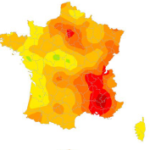Link to Pubmed [PMID] – 28200111
Link to DOI – 10.1093/aje/kwx008
Am J Epidemiol 2017 Nov; 186(10): 1194-1203
The spread of Zika virus in the Americas has been associated with a surge in Guillain-Barré syndrome (GBS) cases. Given the severity of GBS, territories affected by Zika virus need to plan health-care resources to manage GBS patients. To inform such planning in Martinique, we analyzed Zika virus surveillance and GBS data from Martinique in real time with a modeling framework that captured dynamics of the Zika virus epidemic, the risk of GBS in Zika virus-infected persons, and the clinical management of GBS cases. We compared our estimates with those from the 2013-2014 Zika virus epidemic in French Polynesia. We were able to predict just a few weeks into the epidemic that, due to lower transmission potential and lower probability of developing GBS following infection in Martinique, the total number of GBS cases in Martinique would be substantially lower than suggested by simple extrapolations from French Polynesia. We correctly predicted that 8 intensive-care beds and 7 ventilators would be sufficient to treat GBS cases. This study showcased the contribution of modeling to inform local health-care planning during an outbreak. Timely studies that estimate the proportion of infected persons that seek care are needed to improve the predictive power of such approaches.






